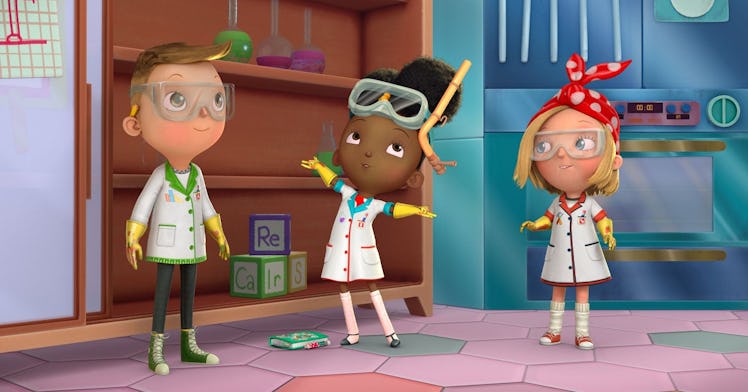Build a Homemade Thermometer to Measure the Weather
This article was produced in partnership with Ada Twist, Scientist. Stream now, only on Netflix. ADVERTISEMENT Through this activity and conversation, your child will learn one of the foundations of meteorology and build a device that they can use to measure how warm or cold it is outside. In other words, it’s both an educational,... View Article

This article was produced in partnership with Ada Twist, Scientist. Stream now, only on Netflix.
Through this activity and conversation, your child will learn one of the foundations of meteorology and build a device that they can use to measure how warm or cold it is outside. In other words, it’s both an educational, engaging way to spend a weekend afternoon and an ongoing reminder of how cool science can be.
Getting kids excited about science is also the goal of Ada Twist, Scientist, the Netflix animated series based on the blockbuster children’s book. It chronicles the adventures of a young Black female scientist who stages experiments at home and uses scientific discovery, collaboration, and friendship to help others.
Ada Twist is a great way to get kids excited about science. And like the other Saturdays We S.T.E.M. activities, building a homemade thermometer is a great opportunity for families to get hands-on experience with scientific practices and methods. Here’s how.
Prep Time: 5 minutes (to gather materials)
Entertainment Time: 5-10 minutes, plus the time spent periodically checking the temperature
Energy Expended by Child: minimal physical, plenty of mental
What You Need:
- Glass bottle
- Water (enough to fill the bottle a quarter full)
- Rubbing alcohol (enough to fill the bottle a quarter full, adults should handle this one)
- Food coloring
- Clear straw
- Bottle stopper or clay
- Wax pencil or marker and tape
How to Build:
Have your kid fill the bottle a quarter of the way full with water, and then add an equivalent amount of rubbing alcohol. Add enough food coloring to make the liquid inside stand out.
If you have a rubber bottle stopper, insert the straw through the opening so that it goes deep into the bottle without touching the bottom. If you are using clay, hold the straw at the same level and use the clay to seal off the opening, and hold the straw in place.
If it’s warm outside, place the newly built thermometer in the sun and wait for as long as it takes for the liquid inside to reach the temperature of its new surroundings, about an hour or so. When you return, the liquid will have risen inside the straw. Using the wax pencil, draw a line on the side of the bottle at the level of the liquid. If you are using a regular marker, put a piece of tape up the side of the bottle and mark there. Kids can also write down the dates and times of their measurements.
Turn checking the thermometer into a regular part of your morning routine—connect it to picking out clothes for school that are appropriate for the temperature outside. Prod kids to compare the readings taken over the course of a day and the course of a season, tracking how the temperature rises through spring and falls through autumn, for instance. Have them put it in the fridge to see the liquid level drop dramatically. You can even construct a second thermometer to place elsewhere so that you can compare the temperatures in two places (e.g. inside and outside, in the sun and in the shade).
Wrap-Up:
Building the thermometer is cool, but the real satisfaction comes as kids use it over time. As a parent, you can draw attention to how it rises throughout a summer day and drops as summer turns into fall. It’s the rare kind of activity that combines both short-term fun and long-term value, rewarding kids’ inquisitiveness and encouraging them to learn more about the world around them.
Building and using a homemade thermometer is a fantastic way to encourage and reinforce your child’s interest in the “S” part of S.T.E.M. and know that you’re well on the way to raising your own Ada Twist.